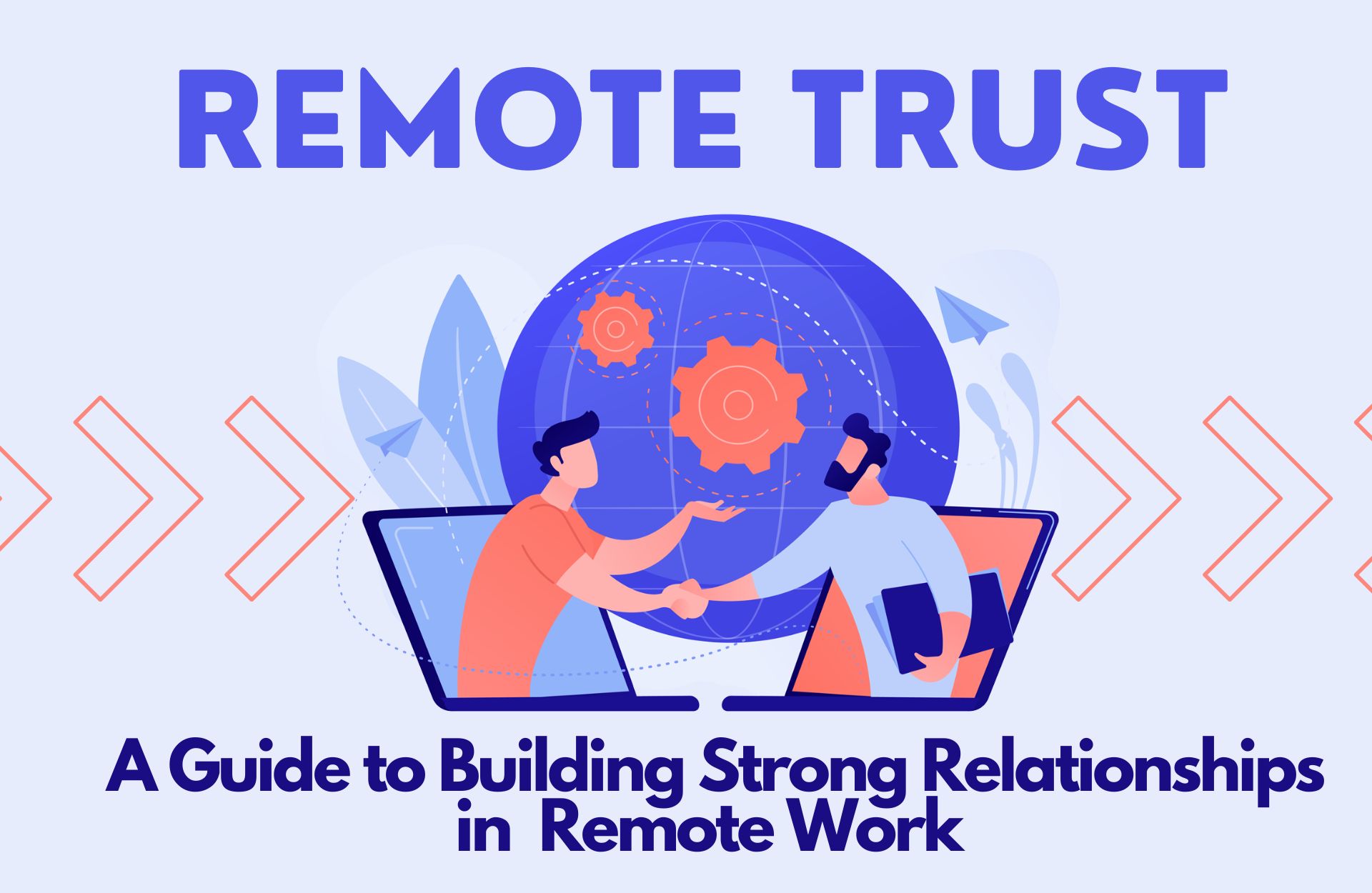As the world is turning into a remote hub, managing a remote workforce is becoming a trending topic. Though remote work has its own set of advantages, managing it efficiently can be as tricky as walking on a tightrope. In this article, we will discuss some astute tips that can help you sail through the remote work waters and keep your team focused and driven.
Building a Strong Foundation for Managing Remote Employees
Managing remote employees can be compared to building a house – a strong foundation is key to success. It’s important for managers to lay out clear expectations and guidelines from the get-go, just like a construction crew would lay out a solid foundation before starting to build a house.
In this section, we’ll dive into some smart tips that managers can use to establish this foundation and ensure their remote employees are set up for success.
Hire the right remote employees
When it comes to building a top-notch remote team, hiring the right employees is like carefully selecting the ingredients for a gourmet meal. Managers must carefully evaluate a candidate’s skills, experience, work ethic, and communication skills to ensure they are the perfect fit for a remote work environment. Only self-motivated, disciplined, and independent workers need to apply, as there will be no micromanagement to keep them on track.
And let’s not forget the importance of prior remote work experience, as it can be the secret ingredient that separates the successful from the mediocre. With the right remote employees on board, managers can create a masterpiece of a remote team that is both productive and successful.
Develop a strong company culture
It can be a challenging task to keep employees aligned with the company’s mission and values, especially when they’re working from different locations. However, there are ways to create a sense of belonging and camaraderie among remote workers. For instance, companies can host virtual events, create a shared company culture document, and provide regular updates on company performance and achievements.
Building a strong company culture can be the glue that holds the remote workforce together, motivating them to achieve common goals and overcome obstacles.
You may also like: The impact of remote work on company culture
Clearly define roles and responsibilities
Managing remote employees can be like sailing in rough seas, but defining roles and responsibilities is like setting a course that keeps everyone from drifting off course. When working remotely, it’s like navigating in the dark, so it’s crucial to have a clear understanding of each employee’s responsibilities and priorities. This helps remote workers to steer clear of obstacles and helps managers to evaluate their work effectively.
Providing written job descriptions and having regular check-ins can be like a lighthouse in the storm, guiding everyone to safety.
Establish communication protocols
If you want to manage remote employees effectively, establishing communication protocols is a no-brainer. Without clear channels of communication and guidelines, you might as well be playing a game of telephone with a group of moles. Thankfully, there are a plethora of tools at your disposal, such as email, instant messaging, video conferencing, and project management software, that can help remote employees stay connected and informed. Regular check-ins, one-on-one meetings, and team meetings can also help you build rapport, foster communication, and increase collaboration.
Just make sure to define expectations around response times, availability, and working hours, or else you might end up with a bunch of ghost employees who disappear into the ether.
Worth Reading: Top 8 Remote Collaboration Tools for Teams
Provide the necessary tools and resources
Equipping remote employees with the necessary tools and resources is akin to arming soldiers with the right weapons to win the battle. Remote workers cannot perform their job without the right hardware and software, such as video conferencing tools, project management software, and collaboration software. Moreover, granting access to files and documents necessary to complete tasks is critical to ensuring their efficiency. With cloud-based storage solutions like Google Drive and Dropbox, sharing files securely is a breeze. Companies should also consider reimbursing remote workers for home office equipment, such as ergonomic chairs, desks, and monitors, as they toil to create a comfortable and efficient workspace.
The right tools and resources enable remote workers to accomplish tasks effectively and efficiently, leading to better outcomes and improved job satisfaction.
Deep focused: The Future of File Management: Cloud Storage for Remote Employees
Best Practices for Managing Remote Employees
It’s not enough to just build a foundation; you need to maintain it too. As a manager, it’s important to continuously improve your management skills, especially when it comes to remote employees. So, let’s dive into some best practices that will help you stay on top of your game and lead your team to success.
Set clear expectations
Clearly defining the goals and objectives of your remote team is crucial to ensure that everyone is working towards the same goals. Don’t leave your remote employees in the dark, or else they’ll be lost in the Bermuda Triangle of productivity!
Maintain open communication
Let the communication channels flow like a river and be accessible as a breeze in a hot summer day. Urge your employees to keep the chatter going and respond to their questions and complaints as fast as a rocket.
Provide regular feedback
Shower your remote employees with regular feedback and appreciate their efforts as if you’re the rain and they are the blooming flowers. This will not only keep them motivated but also make them feel valued and engaged in their work.
Foster collaboration
Encourage your remote team to collaborate and participate in team-building activities. You can even make it mandatory! Who doesn’t love forced fun? This will build team morale and camaraderie, and everyone will be singing “Kumbaya” in no time.
Track productivity
Let’s use productivity tools to keep a watchful eye on our remote employees, ensuring they’re not slacking off while working from the comfort of their homes. With these tools, we can monitor their every move and determine whether they’re meeting their goals or not. And when they’re not, we can quickly swoop in to offer our “support” and guidance.
Useful Article: Remote to Results: Managing a Productive Remote Workforce
Offer support
Remote workers often feel like they’re floating in the middle of the ocean, without a life jacket or a paddle. Don’t worry! As a manager, you can throw them a lifeline by offering support when needed. Provide them with the necessary resources and tools to help them keep their heads above water, and don’t forget about the importance of professional development. Consider offering access to training programs to help them navigate the ever-changing waters of their roles.
Trust your employees
Letting go of the reins and allowing remote employees to do their thing might seem like a leap of faith, but it can be a game-changer. Granting autonomy and trusting them to make decisions on their own can lead to a sense of accountability and empowerment among employees.
You may also like: Remote Trust: A Guide to Building Strong Relationships in a Remote Work Environment
Recognize and reward performance
Why not offer a measly pat on the back, or a badge they can pin on their pajamas for employees who somehow manage to exceed your expectations? Or, better yet, how about you make them work their tails off, then offer a minimal bonus that wouldn’t even cover a decent bottle of wine. After all, it’s not like recognition and incentives could boost employee morale and productivity, right?
Learn more about: Keep Your Team Engaged and Motivated With Fun Rewards
Conclusion
Managing remote employees is like taming a wild beast, but with the right tools and techniques, you can make it purr like a kitten. It all starts with hiring the right employees and nurturing a company culture that values hard work and productivity. Clearly defining roles and responsibilities is like setting the stage for a successful play, while establishing communication protocols is like building a sturdy bridge to cross over choppy waters.
Providing the necessary tools and resources is like giving a chef the right ingredients to cook up a delicious meal, and recognizing and rewarding employees who perform well is like adding a special spice that brings out the flavor.
Managing remote employees is not for the faint of heart, but with the right attitude and approach, it can be a rewarding experience for both the employer and employee. It’s important to continuously adapt and learn, as managing a remote workforce is like navigating through uncharted territory.
With these savvy tips, you’ll be able to manage a productive remote workforce that will make your competitors green with envy.





